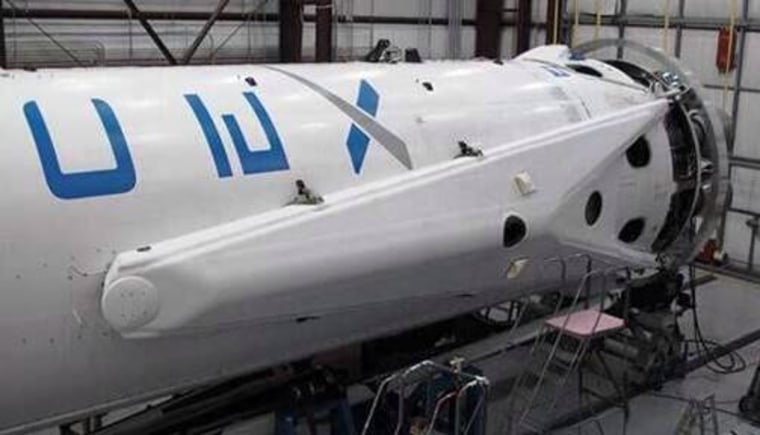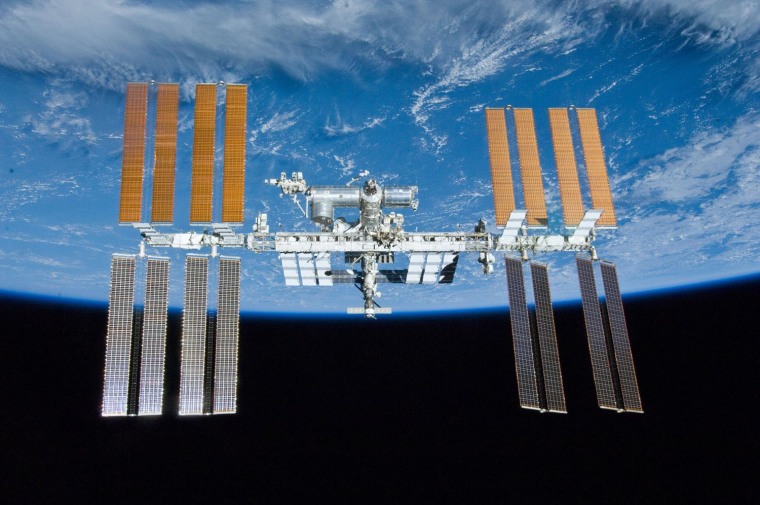Monday's scheduled launch of a robotic SpaceX cargo craft to the International Space Station will proceed despite the failure of a backup electronics box for the station's truss system, NASA says.
Mission managers said they would be able to work around the problems caused by the faiure. "We're good to go," Michael Suffredini, NASA's space station program manager, said during a Sunday news conference.
Suffredini said a spacewalk to replace the box is being planned for April 22, after the SpaceX delivery.
SpaceX, a California-based company founded by billionaire Elon Musk, has a $1.6 billion contract with NASA to deliver supplies and other payloads to the space station. For the next supply mission, about 4,600 pounds (2,100 kilograms) of cargo has been packed inside a Dragon capsule for launch atop a two-stage SpaceX Falcon 9 from Cape Canaveral Air Force Station in Florida.
Liftoff is scheduled for 4:58 p.m. ET Monday, with the chances of acceptable weather set at 80 percent or better. The only concern is the potential for increasing clouds at the launch site.
Redundancy recovered
The electronics box, known as a modulator-demodulator, failed to respond to commands on Friday — and NASA determined that it had to be replaced. The box serves as the backup for another modulator-demodulator that's operating normally. Either box can be used to send commands to components on the space station's main truss, including the robotic arm's rail car system, the station's external cooling system and the movable joints for the power-generating solar arrays.
Suffredini said the main concern about going ahead with Monday's launch was to keep the station's solar arrays in the proper position while avoiding a conflict with the Dragon's arrival and berthing. Astronauts will have to use the station's robotic arm to bring the unmanned capsule in for its berthing on Wednesday, and if both boxes were out of commission, that would have affected the ability to move the arrays.
"We're able to essentially get back the redundancy we need."
NASA planners found a way to keep the arrays in a fixed position during the Dragon's visit, Suffredini said.
"We're able to essentially get back the redundancy we need because we can position the solar arrays such that we're OK," he told reporters.
The plan for the April 22 spacewalk to replace the electronics box is still being fine-tuned, Suffredini said. The operation is expected to take about two and a half hours, and it's considered one of the space station's "Big 12" routine maintenance tasks. Suffredini said replacing the box is "one of the simplest [tasks] we can do."
Critical items on Dragon
Suffredini noted that the Dragon payload included critical items — including a replacement spacesuit and other spacesuit components that would reduce the potential for water leaks like the one that almost drowned an Italian spacewalker last year.
The capsule is also bringing up supplies for the crew, scores of scientific experiments, five nanosatellites and the legs for the station's Robonaut 2 android.
After the supplies are unloaded, the station's astronauts will load it back up with about 3,600 pounds (1,650 kilograms) of cargo for return to Earth. The Dragon will then unhook from the station and descend to its splashdown and recovery from the Pacific Ocean.

This mission is particularly notable because it's the first tryout of a system that could eventually enable the Falcon 9's first stage to fly back to a landing pad. The Falcon 9 due for launch on Monday has been outfitted with deployable landing legs, and the first stage will restart its engines after separation to slow its descent toward the Atlantic Ocean.
SpaceX will try to recover the first stage for potential reuse, said Hans Koenigsmann, the company's vice president of mission assurance. But he cautioned reporters that the procedure was "experimental," and gauged the chances of success at 30 to 40 percent.
